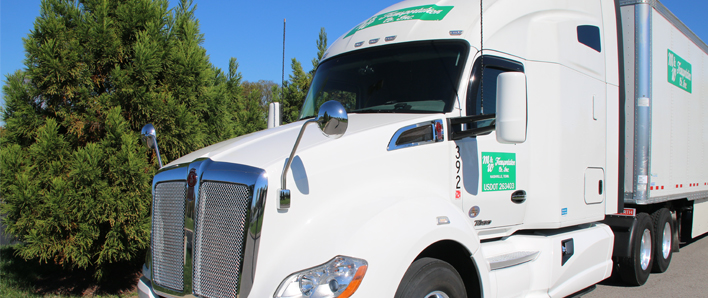
On March 13, 2014, the Federal Motor Carrier Safety Administration (FMCSA) made it mandatory for all commercial transportation companies to install electronic logging devices (ELDs) onto all trucks, buses and other fleet vehicles. The benefits of these devices include a reduction in paper logs, increased visibility between drivers and dispatchers, and enforcement of hours-of-service rules. The FMCSA also predicts that this change will save the industry $1 billion every year. Let’s take a few moments to go over what the ELD rule involves and how it impact truck driving jobs.
What is the ELD Rule?
The ultimate goal of the electronic logging device rule is to create a safer work environment for truck drivers while also facilitating easier, faster and more accurate tracking, management and sharing of records of duty status data (RODS). Prior the ELDs rule being implemented most commercial truck driving companies were already using what’s known as automatic onboard recording devices (AOBRDs). These devices are to be replaced with the new ELDs over the course of four years.
According to the FMCSA, the rule will save an average of 26 lives and prevent 562 injuries annually caused by crashes involving large commercial vehicles.
How does an ELD work?
The electronic logging device effectively synchronizes with a vehicle’s engine to record key factors, such as driving time, in an effort to facilitate more accurate hours-of-service recording. An ELD is designed to automatically monitor and track engine hours, vehicle movement, miles driven and location details. It’s not meant to track a driver’s personal whereabouts.
Those with existing truck driving jobs that were used to the old AOBRDs method will likely not notice a significant change in process and recording. Those entering new truck driver jobs will also experience limited impact, depending on where their employer is in the transition process.
Who does the ELD Rule effect and what is the time line?
In general, the new ELD rule applies to interstate drivers of commercial vehicles, including trucks and buses that are currently required to maintain records of duty status (RODS). The following are not required to comply with the ELD rule (although their employers may choose to do so anyway):
- Drivers using paper logs no more than 8 days during any 30-day period
- Drivers of vehicles that were manufactured prior to model year 2000
- Drive-away/tow-away drivers (those transporting vehicles for repair, sale or lease)
Important Dates for Commercial Carriers and Truck Drivers – Those using paper logs and logging software that haven’t already done so will be required to transition to the new ELDs by no later than December 18, 2017. Carriers and drivers currently using AOBRDS will be required to transition to ELDs no later than December 16, 2019.
If you’re just entering the truck driving industry, or you have questions about this new rule, we’d be happy to help. Give us a call today at 800-251-4209.

